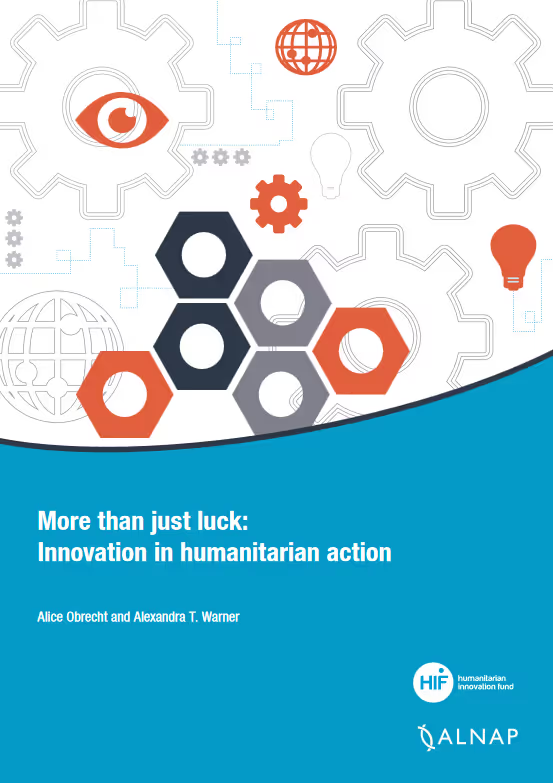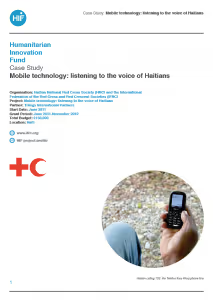Mobile technology: listening to the voice of Haitians


This case study analyses the innovative development and use of an Interactive Voice Response (IVR) system for the first time in a humanitarian setting by the International Federation of Red Cross and Red Crescent Societies (IFRC) through the national society, the Haitian Red Cross (HRC).
Haiti’s 2010 earthquake was a major opportunity for international aid agencies to address the challenge of improving twoway communication with disaster-affected communities – a facility emphasised as central to emergency response following previous disasters. The IFRC sought to use mobile technology to disseminate crucial information and to gather beneficiary feedback about its operations, to enable greater accountability of international agencies to local communities and to allow these communities a greater decision-making role in its disaster response efforts.
This is one of 15 case studies undertaken by ALNAP in partnership with Elrha’s Humanitarian Innovation Fund (HIF), exploring the dynamics of successful innovation processes in humanitarian action. The case studies examine what good practice in humanitarian innovation looks like, what approaches and tools organisations have used to innovate in the humanitarian system, what the barriers to innovation are for individual organisations, and how they can be overcome. The case studies are synthesised in the summary report, 'More than just luck: Innovations in humanitarian action'.